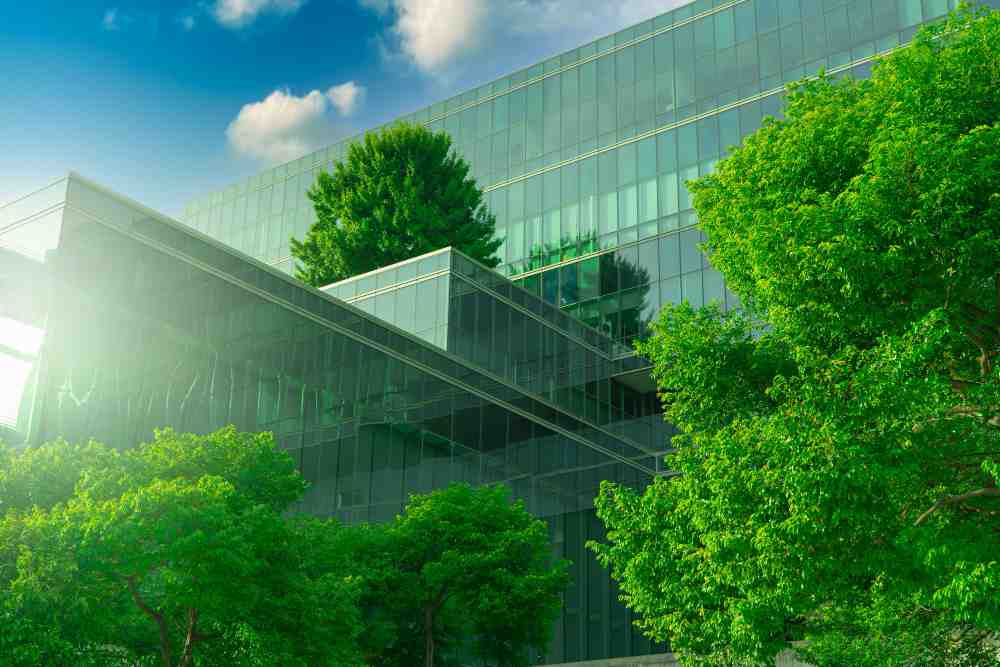Introduction
The construction of certified green buildings in Malaysia is not just an architectural trend but a step toward a sustainable future. These buildings minimize environmental impact, conserve energy, and promote healthier living spaces. But how can you create one that meets certification standards?

What is a Green Building?
Key Principles of Green Buildings
Green buildings are structures designed with sustainability at their core. They focus on efficient energy use, eco-friendly materials, and reducing waste.
Importance of Certification
Benefits of Certified Green Buildings
Certified green buildings add value to property, reduce operational costs, and comply with Malaysia’s sustainability goals.
Regulatory Importance in Malaysia
Certification ensures compliance with local regulations like the Green Building Index (GBI), which sets benchmarks for sustainable construction.
Steps to Make a Certified Green Building in Malaysia
Step 1: Understanding Green Building Standards
Overview of the Green Building Index (GBI)
The GBI is Malaysia’s primary green certification system. It evaluates buildings based on criteria like energy efficiency, water conservation, and material sustainability.
Criteria for GBI Certification
Projects must meet specific benchmarks, including energy savings, indoor air quality, and environmental impact reduction.
Step 2: Selecting a Sustainable Site
Site Evaluation and Planning
Choose a location that minimizes disruption to natural ecosystems. Conduct a thorough environmental impact assessment.
Integration with Natural Ecosystems
Incorporate green spaces and maintain biodiversity to align with sustainability goals.
Step 3: Designing for Energy Efficiency
Optimizing Building Orientation
Position the building to maximize natural lighting and reduce energy dependence on artificial lighting.
Incorporating Renewable Energy Solutions
Install solar panels or wind turbines to generate clean energy on-site.
Step 4: Utilizing Sustainable Materials
Choosing Eco-Friendly Construction Materials
Select locally sourced, recyclable, or biodegradable materials to reduce the carbon footprint of construction.
Reducing Construction Waste
Implement strategies to recycle and reuse materials during the building process.
Step 5: Water Efficiency Measures
Rainwater Harvesting Systems
Install systems to collect and store rainwater for non-potable uses like irrigation.
Water Recycling and Management
Incorporate greywater recycling systems to reduce freshwater consumption.
Step 6: Focusing on Indoor Environmental Quality
Enhancing Air Circulation
Use natural ventilation systems and air-purifying plants to maintain high indoor air quality.
Using Non-Toxic Materials
Ensure that construction and furnishing materials are free of harmful chemicals.
Step 7: Monitoring and Maintenance
Smart Systems for Energy and Water Use
Install IoT-based systems to monitor energy and water consumption, ensuring efficiency.
Regular Assessments and Upgrades
Conduct periodic evaluations to maintain certification standards and improve performance.
Challenges in Achieving Certification
High Initial Costs
Investment vs. Long-Term Benefits
Although the initial costs are high, the long-term savings in operational expenses justify the investment.
Lack of Awareness and Expertise
Educating Stakeholders
Training for developers, architects, and contractors is essential to drive green building initiatives.
The Future of Green Buildings in Malaysia
Emerging Technologies
Smart and Sustainable Solutions
New technologies, such as advanced energy storage and AI-driven systems, are paving the way for smarter green buildings.
Government Support and Incentives
Policies Promoting Green Development
Tax incentives and grants encourage more developers to adopt sustainable practices.
Conclusion
Building a certified green building in Malaysia requires careful planning, a commitment to sustainability, and adherence to strict standards. The journey might be challenging, but the benefits for the environment, economy, and society make it worthwhile.
FAQs
- What is the Green Building Index (GBI)?
The GBI is Malaysia’s green certification system evaluating buildings based on energy efficiency, sustainability, and environmental impact. - How long does it take to certify a green building in Malaysia?
The process varies depending on the project size and compliance level, typically ranging from a few months to a year. - Are certified green buildings cost-effective?
Yes, they reduce utility costs, enhance property value, and offer long-term financial benefits despite higher initial investments. - What technologies are essential for green certification?
Key technologies include solar panels, smart energy systems, rainwater harvesting, and efficient ventilation systems. - How does a green building benefit the community?
Green buildings improve air quality, promote healthier living spaces, and reduce environmental impact, benefiting both individuals and the broader community.
Want to learn more? Read:
